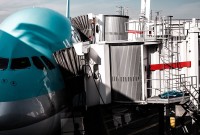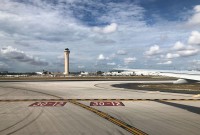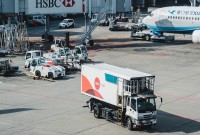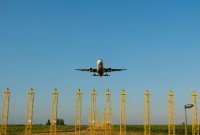- Home
- Business Processes
- Industry Knowledge
- Aerospace Industry
- Automotive Industry
- Banking Domain
- BFSI Industry
- Consumer/ FMCG Industry
- Chemicals Industry
- Engineering & Construction
- Energy Industry
- Education Domain
- Finance Domain
- Hospitality Domain
- Healthcare Industry
- Insurance Domain
- Retail Industry
- Travel and Tourism Domain
- Telecom Industry
- Leadership Skills
- eLearning
- Home
- Industry Knowledge
- Aerospace Industry
- Challenges in the Aerospace and Defense Industry
Challenges in the Aerospace and Defense Industry
New market dynamics are dramatically changing the way A&D companies serve their customers, collaborate with partners, and take ideas and solutions to the market. Given below are several vitally important challenges that are currently confronting the aerospace and defense industry and strategies to mitigate them.
Given below are some major challenges faced by the aerospace and defense industry:
Talent Management:
A&D organizations are in dire need of science, technology, and engineering talent to continue to support future growth. This is aggregated by the fact that a high percentage of skilled workers are quickly reaching the age of retirement, meaning aerospace and defense companies will experience a significant shortage of knowledge and experience. Attracting and retaining critical talent is increasingly viewed as a top strategic issue.
To overcome the challenge of talent management, organizations need to create talent management strategies, people management practices, behavior led strategy execution strategies that align people with business objectives.
Finding Growth Opportunities:
There are scenarios in which military investment spending on new acquisitions and R&D could decline from 2008 to 2016 by half. This will have a direct impact on the capabilities to develop innovative technologies and build new weapons systems. Further, there is an influx of new competition by recent consolidation of European and other foreign defense markets. This has introduced equal partners who are financially and technologically competitive.
Defense companies may need to shift from a central operating model to a portfolio management model that allows individual business units to adapt to the unique requirements of their markets.
Global Integration:
Companies will face the challenge of moving toward global integration in engineering collaboration, operations collaboration, logistics, infrastructure, national regulations and taxes, competitor companies.
Globalization can pose many challenges for organizations in the aerospace and defense industry, but companies can use global integration strategies to overcome these challenges. Companies can focus on industry-specific globalization by creating differentiation and sophisticated skill sets to effectively play in the global arena. Look for strategic alliance partnering and focus on developing solutions to shorten product life cycles and reduce time to market for solutions.
Profitability & Cost Pressures:
The rise in the costs of various raw materials and other input costs are driving down the industry's profitability. Companies must consider the need to cut costs and improve efficiency to remain viable. There will be increased margin pressure due to rising raw material demand and this will result in increased costs for aerospace companies.
Create new business models, commercializing existing technologies, and dynamically creating new opportunities for profitable growth, despite having to work in traditionally risk-averse cultures. Focus on new innovative products, as more competitors enter the global market causing product commoditization.
Better Program & Project Management:
Organizations with complex matrices and autonomous business units often create cultural and organizational barriers to bring efficiencies across the enterprise. Customers in the industry are demanding better program and project execution from aerospace and defense companies.
This challenge could be met by increased internal collaboration by having cross-function and cross-division integration to better leverage technologies and resources throughout the enterprise. Focus on ability to deliver on time, on budget, and with the appropriate level of quality. Perform with increased customer focus and ensure that the customer perspective is the driving force behind all value-added business activities.
Impact of COVID-19 Pandemic
This pandemic has plunged the global airline industry into an unprecedented crisis as airline bookings plummet in response restrictions on travel. Most companies following work from home posture has resulted in heavy reduction of business related travel. Continued reduction in air travel will most likely persist for a prolonged period.
Impact on Airline Industry:
- Dive in revenue and cash flow seems imminent for most airlines
- Defense side of the industry, the demand is protected by budgeted government spending
- Reduction in commercial aircraft orders
- Companies to explore business continuity plans
- Airlines will likely face a continued downturn in commercial travel and revenue
- Likely face cash-flow liquidity challenges
- Decrease in new aircraft orders
- Difficulty in managing debt obligations
- Aircraft and air travel demand will likely be impacted for a prolonged period
Steps to Consider:
- Airlines and aircraft manufacturers will likely need swift government support
- Revisit capital allocation and cash flow plans
- Conserve cash during the period of uncertainty
- Consider refinancing debt.
- Outsource some corporate functions
- Establish immediate and contingent safety measures for employees
- Cut discretionary and capital spending to support operations
Suggested Reading and Resources
Related Links
You May Also Like
-
Civil Aerospace - Commercial Simulation and Training
Training people how to operate and maintain today’s sophisticated aircraft as well as on-board and ground support systems can be very complex and costly. To be effective, the training environment must accurately simulate the features and capabilities of the actual systems in a wide range of operating scenarios. Commercial modeling, visual simulation, flight simulation, and computer-based training are the key methods used by this subsector.
-
An overview of the Aerospace Industry. A brief account of how modern aerospace began way back with Sir George Cayley in 1799 and the success story of the Wright Brothers to today's massive international airspace developments.
-
Civil Aerospace: Maintenance, Repair & Overhaul (MRO)
This subsector under the civil aerospace industry includes the maintenance, repair, and overhaul (Known as MRO) of civil aircraft and aircraft components. This includes line and heavy maintenance of civil aircraft, as well as repair and overhaul of all parts of an aircraft, including engines, electronic components, and avionics, instruments, and aircraft structures.
-
Aerospace Industry - The Competitive Landscape
This article provides an overview of the competitive landscape of the aerospace industry. Read how the compaction is shaped up across the US and the globe, followed by a detailed discussion of the top 5 players in the sector in terms of revenue.
-
Civil Aerospace: Commercial Avionics Industry
Commercial avionics refers to cockpit electronics and airborne equipment, although it doesn't include antennas, recorders, or other passenger-only cabin systems. Avionics is referred to denote the electronic systems that are utilized in aircraft.
-
Military & Defense Aerospace Sector – Sector Profile
In this article, we will discuss the important sub-sectors of the Military & Defense Aerospace Sector namely military aircraft manufacturing and military avionics, maintenance, repair, and overhaul (MRO), missiles, C4ISR, and related services and modeling, simulation, and training.
-
Civil Aviation Sector – A brief History
The civil aviation sector has transformed itself during the last hundred years. There has been massive technological development in passenger traffic and comfort and now the civil aviation industry accounts for approximately 30% of the overall aerospace industry. A brief account of civil aviation history is presented in this article.
-
Civil Aerospace Sector - Sector Profile
In this article, we will discuss the four important sub-sectors of the Civil Aerospace Sector namely “Civil Aircraft Manufacturing”, “Commercial Avionics”, “MRO” and “Commercial Simulation & Training”.
-
Aerospace Industry: The Business Model
In this article, we will discuss the value chain of the Aerospace Industry and will define the generic business model to understand the key process areas in the aerospace industry. This will provide you with a basic understanding of key activities in the industry.
-
Key Sectors of Aerospace and Defense Industry
Understand the categorization of the aerospace industry to various sectors based on the services it currently provides. Understand the key constituents under these sectors and activities under each of these sectors.
Explore Our Free Training Articles or
Sign Up to Start With Our eLearning Courses

About Us
Learning
© 2023 TechnoFunc, All Rights Reserved









